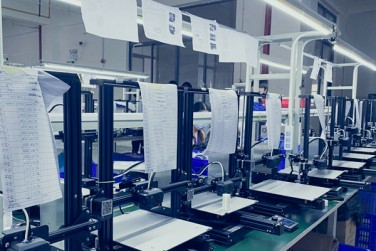How to get a prototype manufactured?
Views: 360 Update date: Jun 20,2024
Getting a prototype manufactured involves several key steps. Here's a detailed guide to help you through the process:1. Define Your Prototype
Purpose: Determine the specific goals for your prototype (e.g., functional testing, demonstration to stakeholders, etc.).Specifications: Clearly outline the dimensions, materials, and any other essential specifications.
2. Create Detailed Designs
Sketches: Begin with rough sketches to visualize the concept.CAD Models: Use computer-aided design (CAD) software to create detailed 3D models.
Popular CAD tools include SolidWorks, AutoCAD, and Fusion 360.
3. Choose the Right Prototyping Method
3D Printing: Ideal for plastic components and rapid iteration.Technologies: FDM (Fused Deposition Modeling), SLA (Stereolithography), SLS (Selective Laser Sintering).
CNC Machining: Suitable for metal parts and precise components.
Injection Molding: Best for mass production but requires a higher upfront cost.
Other Methods: Laser cutting, vacuum casting, or hand-fabrication depending on your needs.
4. Source Materials and Components
Standard Parts: Purchase off-the-shelf components if available.Custom Parts: Identify suppliers for any custom parts you need.
5. Find a Manufacturer
Local Workshops: Good for small runs and quicker turnarounds.Online Manufacturing Services: Companies like Sanwo Rapid Manufacturing Co., Limited offer various prototyping services.
Overseas Manufacturers: Often cost-effective for larger quantities but may have longer lead times.
6. Submit Design Files and Specifications
Provide the manufacturer with your CAD files, material requirements, and any other specifications.Discuss any potential modifications or adjustments needed for manufacturability.
7. Review and Approve Samples
First Article Inspection (FAI): Review the first produced sample to ensure it meets all specifications.Make any necessary adjustments based on the initial sample.
8. Production and Quality Control
Small Batch Production: Start with a small batch to further test and refine.Quality Control: Implement checks to ensure consistency and quality in the final prototype.
9. Iteration and Refinement
Based on testing and feedback, make any necessary design modifications.Repeat the prototyping process as needed until you achieve the desired result.
10. Documentation and Packaging
Ensure all design changes are documented.Plan for proper packaging if the prototype needs to be shipped or presented.
Additional Tips
Cost Management: Keep track of costs at each stage and look for ways to optimize without compromising quality.Intellectual Property: Consider patenting your design if it’s innovative.
Communication: Maintain clear communication with your manufacturer to avoid misunderstandings.
By following these steps, you can effectively navigate the process of getting a prototype manufactured.




